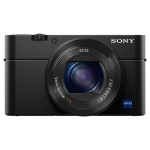
The Gen XY Lifestyle
Sony’s new cameras are well stacked
Sony launches its new prosumer cameras, the RX100 M4 and the RX10 M2, but high performance comes at a hefty price.
Back in 2012, Sony launched the original RX100 for S$999. Up to today, the RX100 is still regarded as the definitive enthusiast-level compact. Now in its fourth iteration, the RX100 is priced at a hefty S$1,399, which puts you somewhat in the league of entry- and mid-priced consumer DSLRs and mirrorless cameras. The RX10 is no better; the price of this superzoom camera has increased from S$1,599 (launch price, current price is S$1,299) to a whopping S$1,899.
But for now let’s just look at the RX100. Each year Sony adds a progressive improvement to their flagship compact – last year a S$200 increase was attributed to the electronic viewfinder, so how does Sony justify the latest price increase?
The answer is that both cameras sport a new stacked-type sensor – a world first – that enables the camera to process five times more image data, which contributes to their most impressive feature: 40x super slow motion video capture at up to 1,000 fps (frames per second), and image capture shutter speed (electronic) of 1/32,000th of a second. Additionally, the high speed Anti-Distortion shutter also reduces the “rolling shutter” effect. The 16fps burst shooting capabilities makes it easier to capture difficult motion shots, while the combination of shutter and ND filter makes it possible to take pictures in extremely brilliant light at up to EV19.
Granted, not all of us will normally shoot pictures at that kind of speed, but it does open up a multitude of creative possibilities, and the results are pretty good from our limited time with the camera. Both cameras are also capable of shooting 4K video, but with some manageable limitations: the RX100 M4 can only record five minutes of footage at a time, while the RX10 M2 can manage 29 minutes.
The displays and EVF on both cameras are pretty good, although interestingly, there’s a distinct lack of touchscreen controls. It’s more telling for the RX100 M4, as the lack of manual controls does make it harder to change settings quickly.
It’s really tough to say if the cameras are worth the price; on first impressions, Sony has made quite a leap in bringing professional-type features down to relatively compact cameras. It’s much easier to say that there’s no camera out there at the meoment that can come close to what these two can do for their size.
RX100 M4
 Image Sensor 1-inch, Pixels 20.1-megapixels, Max. aperture F1.8, ND Filter Yes, Focal length 24-70mm (equivalent), Max. frame rate 1000fps, RAW format Yes, 4K video Yes, Max. ISO 12,800, Max. shutter speed 1/2,000, Max. electronic shutter speed 1/32,000, Max. continuous shooting speed 16fps, Viewfinder 2.36M-dots OLED, Screen 1.23M-dots LCD, Wi-Fi Yes, NFC Yes, Weight 298g, Dimensions 101.6×58.1x41mm
Image Sensor 1-inch, Pixels 20.1-megapixels, Max. aperture F1.8, ND Filter Yes, Focal length 24-70mm (equivalent), Max. frame rate 1000fps, RAW format Yes, 4K video Yes, Max. ISO 12,800, Max. shutter speed 1/2,000, Max. electronic shutter speed 1/32,000, Max. continuous shooting speed 16fps, Viewfinder 2.36M-dots OLED, Screen 1.23M-dots LCD, Wi-Fi Yes, NFC Yes, Weight 298g, Dimensions 101.6×58.1x41mm
RX10 M2
 Image Sensor 1-inch, Pixels 20.1-megapixels, Max. aperture F2.8, ND Filter Yes, Focal length 24-200mm (equivalent), Max. frame rate 1000fps, RAW format Yes, 4K video Yes, Max. ISO 12,800, Max. shutter speed 1/3,200, Max. electronic shutter speed 1/32,000, Max. continuous shooting speed 14fps, Viewfinder 2.36M-dots OLED, Screen 1.23M-dots LCD, Wi-Fi Yes, NFC Yes, Weight 813g, Dimensions 129.0×88.1×102.2mm
Image Sensor 1-inch, Pixels 20.1-megapixels, Max. aperture F2.8, ND Filter Yes, Focal length 24-200mm (equivalent), Max. frame rate 1000fps, RAW format Yes, 4K video Yes, Max. ISO 12,800, Max. shutter speed 1/3,200, Max. electronic shutter speed 1/32,000, Max. continuous shooting speed 14fps, Viewfinder 2.36M-dots OLED, Screen 1.23M-dots LCD, Wi-Fi Yes, NFC Yes, Weight 813g, Dimensions 129.0×88.1×102.2mm







